|
 Flammulaster ciliatus Flammulaster ciliatus
SynonymsPhaeomarasmius ciliatus
BiostatusPresent in region - Indigenous. Non endemic
Images (click to enlarge)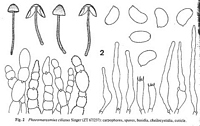 | 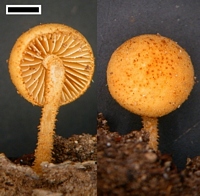
Caption: scale=2mm
Owner: J.A. Cooper | 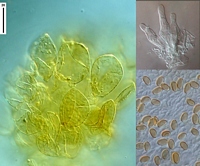
Caption: left cap cells, top right cheilocystidia, and spores
Owner: J.A. Cooper | 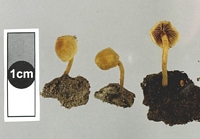
Owner: J.A. Cooper | 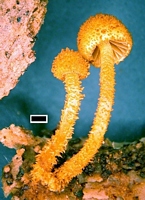
Caption: scale=1mm. Pic too
Owner: J.A. Cooper | 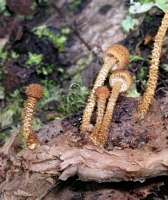
Owner: J.A. Cooper | 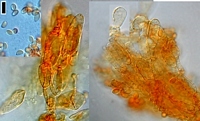
Caption: scale=10um. Spores and cap elements.
Owner: J.A. Cooper | 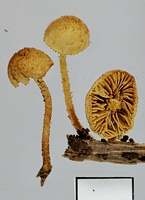
Owner: J.A. Cooper | 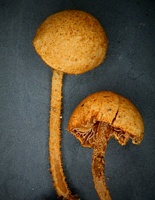
Owner: J.A. Cooper |
Article: Horak, E. (1980). Fungi Agaricini Novazelandiae. VIII. Phaeomarasmius Scherffel and Flammulaster Earle. New Zealand Journal of Botany 18(2): 173–182 (http://www.rsnz.org/publish/abstracts.php).
Description: Pileus -15 mm, hemispheric when young becoming conico-convex to campanulate; pale yellow to ochre-yellow; entirely covered with coarse, granular or squamulose, yellow to yellow-brown warts or spiny scales, especially at disc; dry, not hygrophanous, margin not striate. Lamellae (L 6-12, -3) moderately crowded, adnate to adnexed, ventricose; pale yellow becoming argillaceous-yellow or pale yellow-brown; edge albofimbriate to minutely serrate. Stipe -35 x 1.5 mm, cylindric, central, equal; concolorous with pileus or darker; pruinose at extreme apex, otherwise densely covered with granular to spiny warts (like surface of pileus); dry, hollow, single in groups, persistent veil remnants absent. Context yellowish, brown in base of stipe. Odour and taste not distinctive. Chemical reactions on pileus: KOH - reddish brown, HCI - negative. Spore print brown. Spores 7-8.5 x 4-5 µm, phaseoliform to subelliptic, brown, membrane sometimes thickened (-0.5 µm), smooth, germ pore, distinct. Basidia 18-25 x 5 µm, 4-spored. Cheilocystidia 30-70 x 4-7 µm, fusoid, slender, membrane thin-walled, hyaline, clamp connection on basal septum. Pleurocystidia absent. Caulocystidia like cheilocystidia. Cuticle composed of globose to ovoid cells connected to long chains, membrane hyaline to pale brown, not gelatinised, encrusted with brown (KOH) pigment. Clamp connections numerous.
Habitat: on rotten wood (Nothofagus solandri (Hook.f.) Oerst. var. cliffortioides (Hook.f.) Poole and broad-leaved trees in coastal forests). New Zealand. (Argentina, Chile).
Notes: Phaeomarasmius ciliatus Sing. is one of the most striking species of Phaeomarasmius. In well developed and undamaged specimens the yellow pileus and stipe are densely covered with concolorous or brown spines and warts and therefore they closely resemble a species of Cystoderma. The type material of P. ciliatus was collected on rotten wood of Nothofagus pumilio (Poep. et Endl.) Krasser in Tierra del Fuego (Argentina) and it appears that this fungus is a typical representative in the subantarctic temperate Nothofagus associations both in New Zealand and South America (Horak 1980).
|